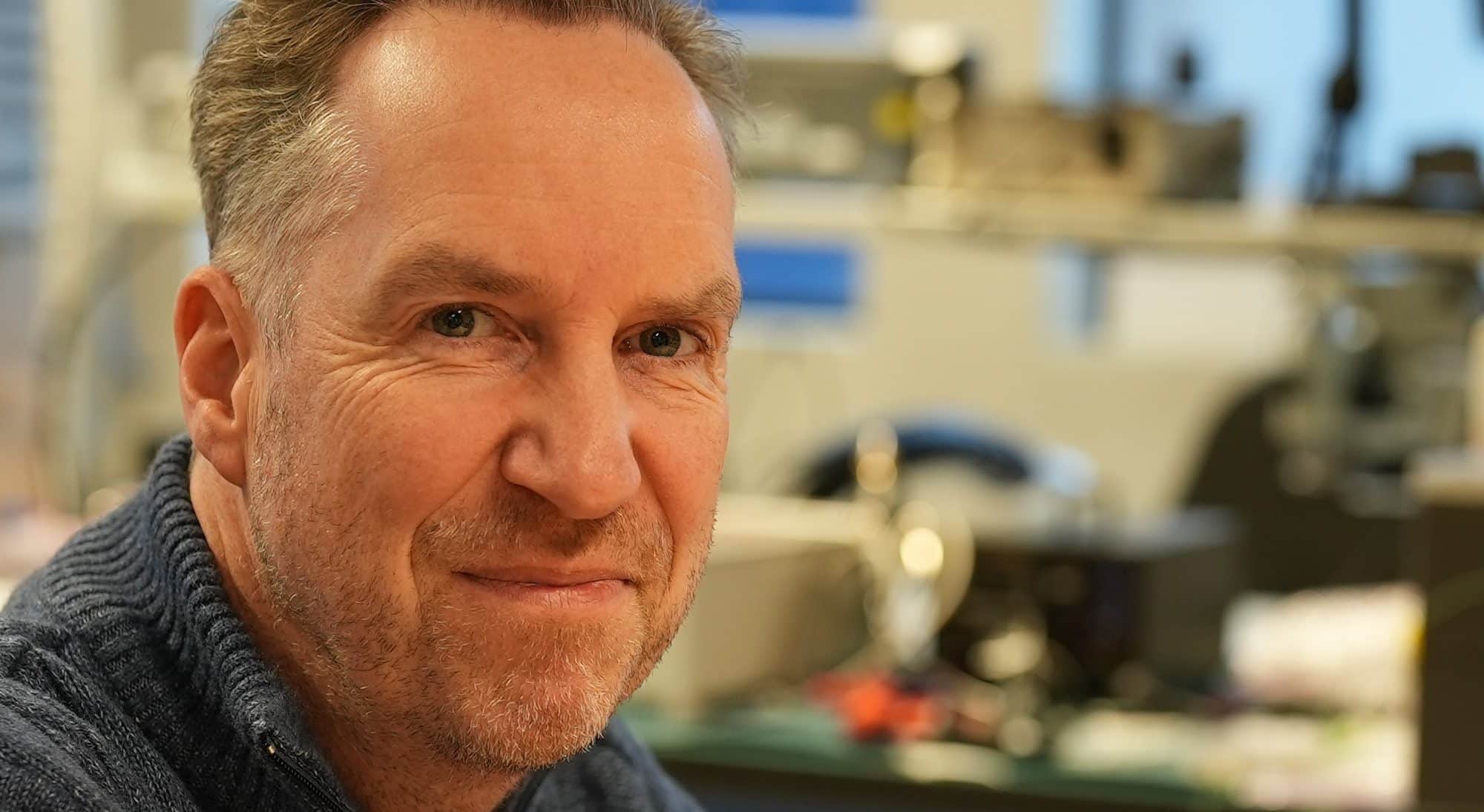An accredited proof of up-to-date knowledge without having to return to the classroom. Hans Krikhaar is a driving force behind the introduction of microcredentials at the Dutch Society for Precision Engineering. In this interview he shares his view on the opportunities this offers.
Hans Krikhaar experienced it himself: after seven years in the field of construction engineering, returning to his original field of study – mechanical engineering – proved to be quite a challenge. Companies wanted verifiable knowledge in this field and were not willing to give him the opportunity to demonstrate his skills and knowledge on the job. In the end, that opportunity came from Philips Lighting, as Krikhaar had demonstrable experience with computer-aided design that the Eindhoven-based company was investing in. Had he been able to prove his up-to-date knowledge in mechanical engineering through microcredentials, his career might have turned out very differently.
For professionals who start working full-time after graduation, it is important to continue to develop their knowledge. Unfortunately, a long-term education program is hard to maintain next to a job, both in terms of time and costs. Workers can, however, benefit greatly from shorter training programs as they can immediately apply the gained knowledge. For one’s position in the market, formal recognition of this knowledge is very important.
In come the microcredentials: recognized digital diplomas or certificates linked to compact, validated courses. Professionals can use these to prove their specifically acquired knowledge or skills without the need to complete a full degree program.
'A system such as microcredentials can help people in similar situations demonstrate their current knowledge, which makes them more attractive for companies.''
From Philips to education
Krikhaar studied mechanical engineering at the University of Twente. He chose Twente because of the space and nature around it.
In the 1980’s, he came into contact with computer-aided design while working at Comprimo, a company that developed oil refineries and chemical plants. At the time, construction drawings were still made by hand, and computers were just starting to support this process. However, when he wanted to return to mechanical engineering after seven years in construction engineering, companies were reluctant to hire him. “A system such as microcredentials can help people in similar situations demonstrate their current knowledge, which makes them more attractive for companies,” Krikhaar explains.
Eventually, Krikhaar obtained his PhD at Philips Lighting, on computer-aided design and manufacturing within mechanical engineering, which allowed him to continue his career in that field. He later worked at Calumatic, Philishave, ASML, and as an independent consultant, before becoming a professor of Smart Manufacturing at Fontys Engineering in 2018.

The request to set up microcredentials came during the COVID-19 pandemic, when ASML wanted to have developed a Manufacturing Excellence course. “In the spirit of lifelong learning, management wanted microcredentials to be awarded to that course,” Krikhaar says. “That’s when I started exploring this form of course validation.”
The Dutch Society for Precision Engineering (DSPE), for which Krikhaar was already active at the time, has had a certification program for post-academic training since 2008, stemming from Philips’ former Center for Technical Training. Courses that the DSPE evaluates are assessed by field professionals for both quality and societal relevance. “The DSPE doesn’t teach courses, they only certify them,” Krikhaar clarifies. “That independence makes our certification particularly valuable, since we’re not judging our own work.”
To keep up with the times, Krikhaar had long believed DSPE should digitize her diplomas and certificates. He connected with Wilfred Rubens, an expert in microcredentials. With his knowledge Krikhaar is now digitizing and transforming the certificates of DSPE-accredited courses.
The value of microcredentials
To harbour the quality of microcredentials the DSPE considers four core values when awarding them. Firstly, they critically evaluate the course’s learning outcomes: what is the added value for the professional? Secondly, the level of the course is taken into account. Courses range from vocational to master’s level, and this is reflected in the microcredential. The third factor is workload: how many days or sessions does the course take? Finally, the assessment method is important. A diploma is awarded when the participant has demonstrated mastery of the learning outcomes. If there is no individual assessment, a certificate of participation is issued instead.
By taking courses needed for current projects, the professional builds a portfolio of competencies. Microcredentials from these courses can be accessed and downloaded by the professional through a secure system. The credentials can also be linked to their LinkedIn profile, which can benefit their career.
'Precision technology is developing incredibly fast. It is important for people in the field to keep up with their knowledge.''
To date, DSPE has awarded microcredentials to 49 courses. Participants who completed one of these in 2023 or 2024 received digital recognition retroactively. Krikhaar ultimately hopes to see microcredentials attached to over 200 courses.
“This way of certifying needs to gain traction. We aim to achieve this by defining ‘learning pathways’: sets of courses that, once you completed them all, show that you’ve gained specific knowledge. For example, after a vocational course in milling and turning, you could follow the specified pathway to become an instrument maker at the Leiden Instrument Makers School. Once you complete all the relevant courses, you are officially certified as an instrument maker.”
Microcredentials and the future
Although Krikhaar has reached retirement age, he remains active in precision engineering about three days a week. For example, he organizes the Dutch Precision Week around the precision fair in November. Why is he so invested in microcredentials?
“Precision technology is developing incredibly fast. It is important for people in the field to keep up with their knowledge. In addition to what I’ve said about how microcredentials work, the system can also help colleagues in HR, who often lack technical training, in guiding employees toward the right development paths. The way DSPE works enables them to better support these engineers. I think that’s a great development.”
Krikhaar hopes that DSPE’s microcredentials will eventually be recognized as professional qualifications and intends to keep working towards that goal. The organization has been around since 1954 and is run entirely by professionals, for professionals, which helps safeguard the quality of the certifications. In order to maintain independence, and to not compete with the providers they assess, the DSPE intends to stay away from offering courses itself.
When asked whether he will roll out microcredentials across Europe, perhaps through the European Society for Precision Engineering and Nanotechnology (EUSPEN), Krikhaar is brief: “That’s not something I’ll take on, but if someone else wants to do this, that would be fine.”
This article is written by Marleen Dolman, freelancer for High Tech Systems.



